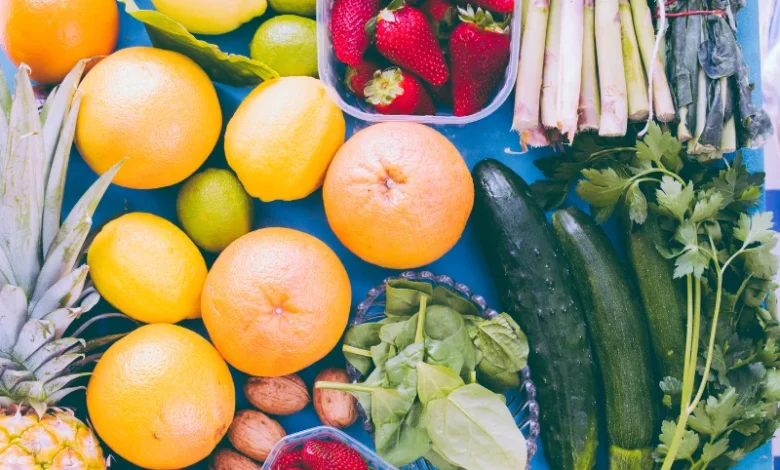
Throwing away food is a waste of money, but it’s also worth considering its effect on the planet. One of the most dangerous greenhouse gases, methane, is released when food rots in landfills. Another problem is that when food is produced but not consumed, the carbon it takes to get to your plate has been for naught!. The good news is that waste can be avoided by following some simple guidelines. Here are some ways to make your fruits and vegetables last longer.
1. Keep the salad crisp
It’s hard to beat a crisp, fresh salad for a healthy lunch!
You can make bagged salad last longer by transferring the leaves to a bowl or storage LUXEAR Fresh Container, placing a few sheets of kitchen paper on top, and wrapping tightly with wax wrap (or cling film) to exclude as much air as possible. This will help keep it crispy and prevent the leaves from wilting in the fridge.
If you bought whole lettuce, remove the individual leaves and let them soak in a bowl of cold water for a few hours.
Rinse them, shake off the excess water (or use a salad spinner), then spread the leaves on a clean cheesecloth or tea towel before rolling them up. Place everything in a large airtight box and store it in the fridge. You’ll be surprised how long the leaves stay crisp and fresh, and you’ll have a stash of pre-washed leaves on hand whenever you want to whip up a green salad.
2. Chop and freeze
If you find that your onions and spring onions are spoiling before you can use them, chop them and freeze them in an empty water bottle or resealable bag. Once they’re frozen, shake or scoop out what you need and put the rest back in the freezer. Other veggies should be blanched and then cooled in cold water before being frozen.
3. Vegan Slime
Your asparagus or herbs can be stored upright in a glass with approximately an inch of water, or you can try wrapping wet paper towels around the base of them. This will keep them hydrated and slowly wilting.
4. More floppy herbs
Sweet herbs like parsley, cilantro, dill, mint, and basil can be stored upright at room temperature in a glass with cool water.
Chop the remaining herbs, store them in an ice cube tray, fill them with water, and place them in the freezer. When ready to use them, pop in as many cubes as you need in your kitchen.
Tough herbs, like rosemary, thyme, sage, and chives, will last longer if stored in the refrigerator – wrap them in dry paper towels before putting them in airtight containers or resealable bags.
5. Beautiful Berries
Wash the berries in a diluted vinegar bath (1 part vinegar to 3 parts water) and dry them thoroughly on paper towels. Store them in a container lined with a paper towel, leaving the lid slightly ajar to allow moisture to escape. The vinegar helps keep bacteria and mould spores to a minimum by lowering the pH level on the berries’ surface.
6. Give them space
Do not store fruits and vegetables together. Many fruits, such as bananas, avocados, and peaches, produce ethylene gas, which acts as a ripening hormone and can speed up the ripening process of other produce.
7. Storage Solutions
If left on a counter, fruits including avocados, tomatoes, mangoes, melons, apples, and pears will continue to ripen. At the same time, fruits such as grapes, citrus, and berries will only deteriorate and should be refrigerated.
8. Ripe and Ready
Allow stone fruits, such as nectarines and mangoes, to ripen in a fruit bowl, then place them in the refrigerator once they are soft enough to eat to store them.
9. Cut carefully
Once you cut fruits and vegetables, they soften quickly and can spoil even in a cold refrigerator.
Protect them with a reusable stretch food cover. It’s better for the planet than cling film and flexible enough to create an airtight seal around your products to give them the most extended life.
Eliminate that food waste guilt (and save money and time at the grocery store) with these smart tips to make your produce last longer.
Berries: Rinse with vinegar
Before storing them in the fridge, wash strawberries, raspberries, and other berries with a mixture of vinegar and water (think a 1:3 ratio). This sanitizes against mold, extending the shelf life by several weeks. After properly cleaning with water, towel everything off.
 Lettuce: Store with a paper towel
Lettuce: Store with a paper towel
Made a little too much lettuce for your salad? Store the remaining leaves in a bowl with a paper towel on top, then seal them with plastic wrap. The towel absorbs moisture, which makes the sheets soggy and brown. Replace the towel when it becomes damp. Another tip: sprinkle the leaves with a pinch of salt, which helps remove excess moisture.
Celery: Wrap in foil
Unlike a plastic bag, aluminum foil will let out ethylene, a ripening gas. When ethylene is trapped in a plastic bag, it accelerates moisture loss and spoilage.
Carrots: keep with water
To keep old carrots from looking parched, cut up the leafy greens first if you bought your carrots whole (the leaves can pull nutrients from the roots). Carrots do best with humidity, so put them in a container filled with water, seal them with plastic wrap and store them in the fridge. Or, wrap them in bubble wrap before storing them in the refrigerator: this will allow just enough moisture to reach the carrots if you prefer not to soak them in water.
Click Here and use: FMEVSMEK for a 5% off discount codeTomatoes: Store out of the refrigerator and stem side down.
Tomatoes don’t like the cold; keep them in the refrigerator, and they will lose their ideal flavour and texture. Also, when leaving them on the counter, if they are off the stem, place them side down, as this part of the fruit is the last to ripen.
Asparagus: Keep vertically in a cup of water.
Asparagus often dries out before it has a chance to cook, but there is a method that will keep it moist enough for your favorite recipes. Just as you would when storing flowers, place the asparagus upright with the cut edges submerged in a bowl or cup of water. Please rate it in the refrigerator and put a plastic bag on the vegetable.
This post contains affiliate links and I may receive a commission, at no additional cost to you, should you purchase through one of my links. Please see my disclosure for more information.



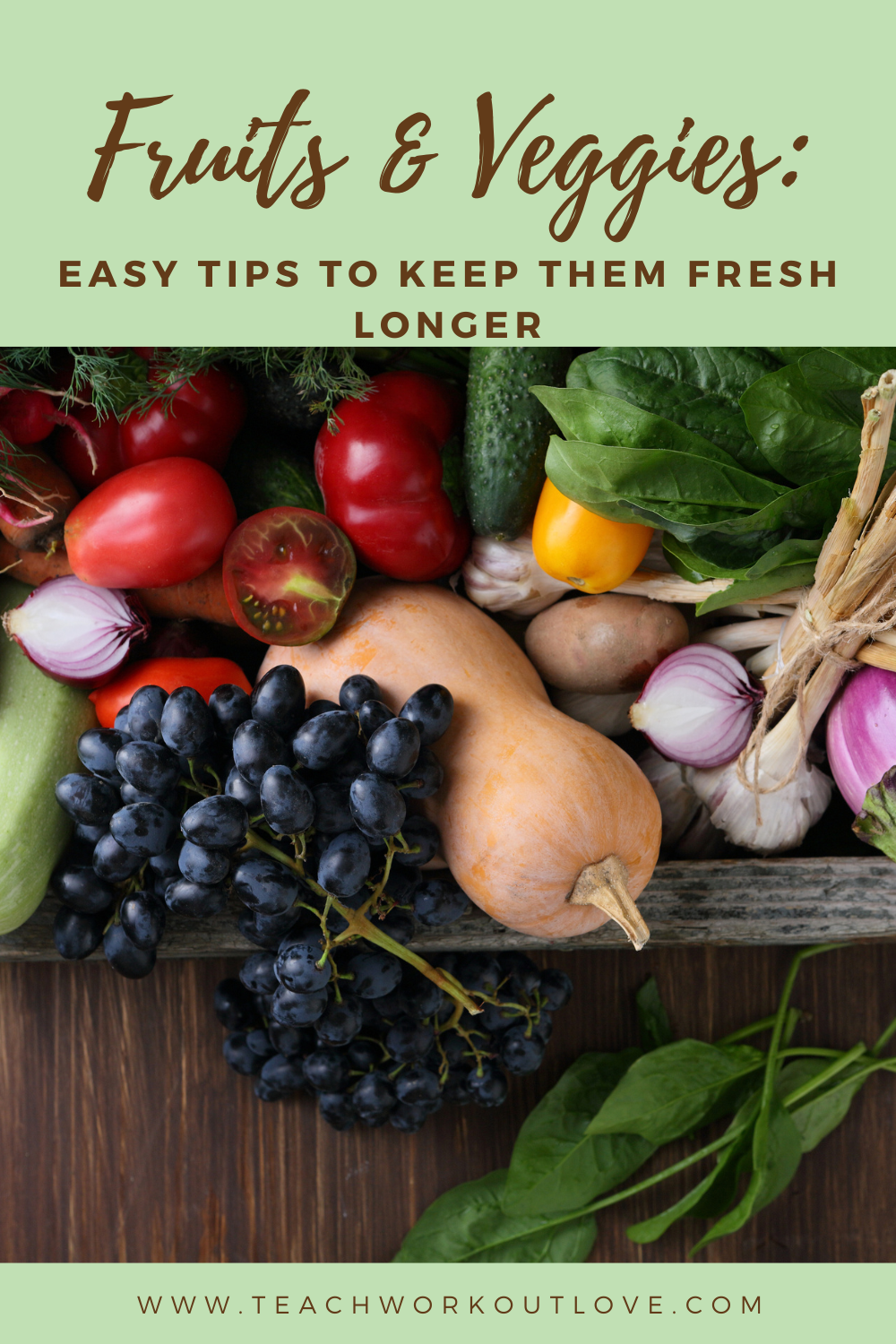
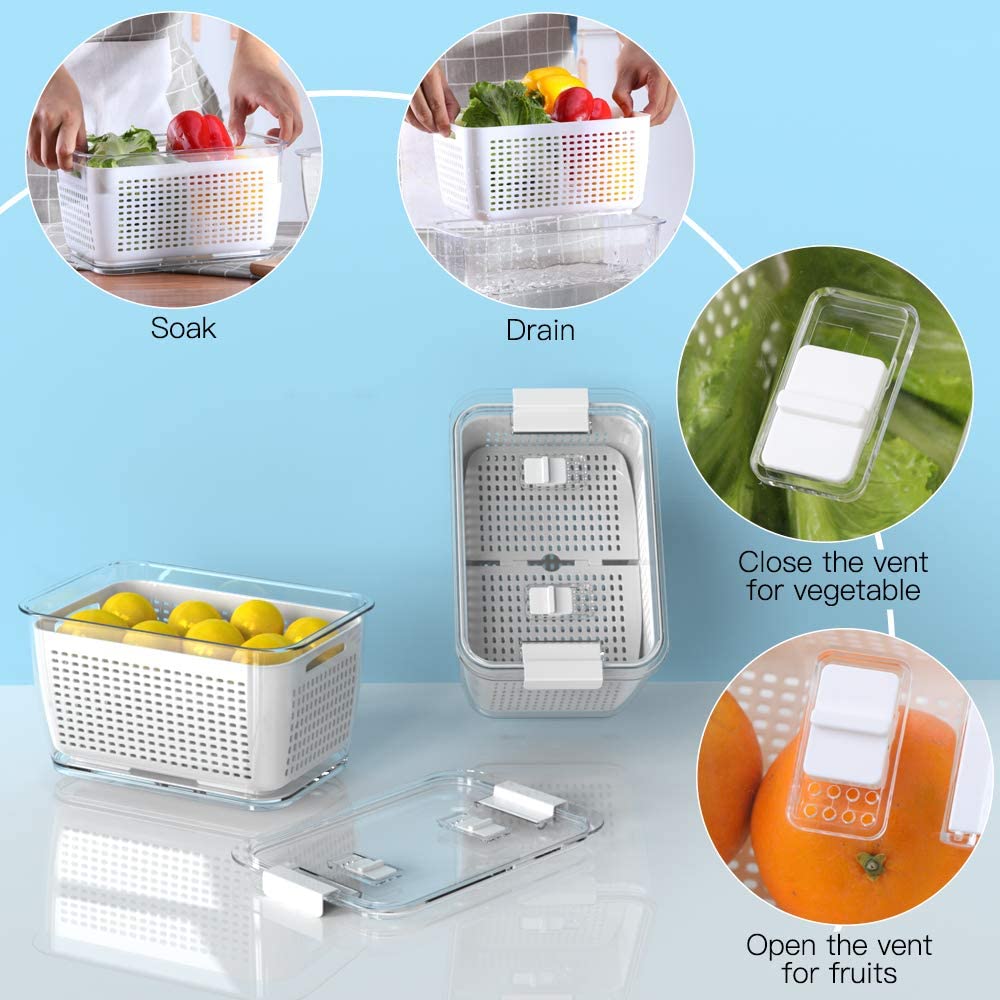
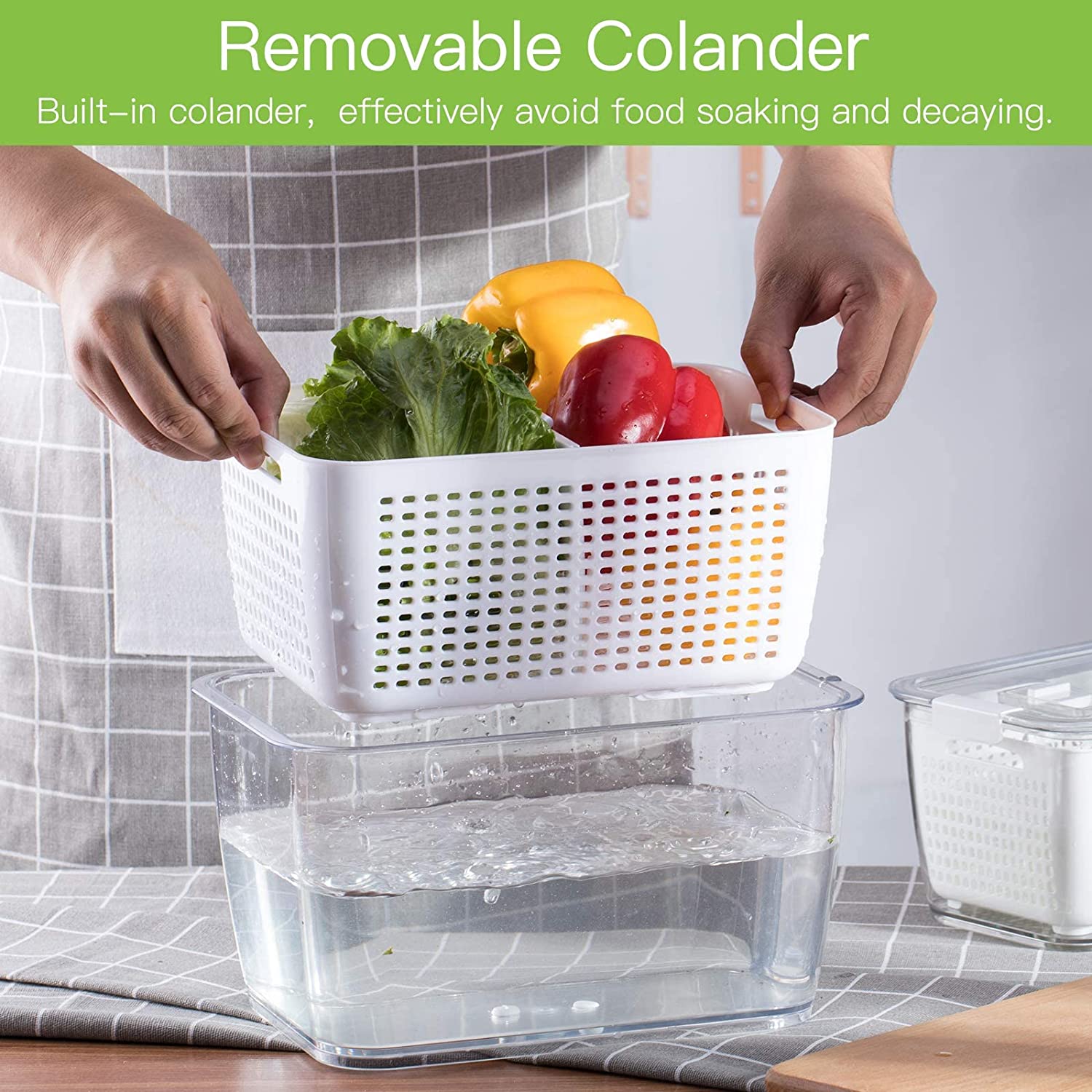
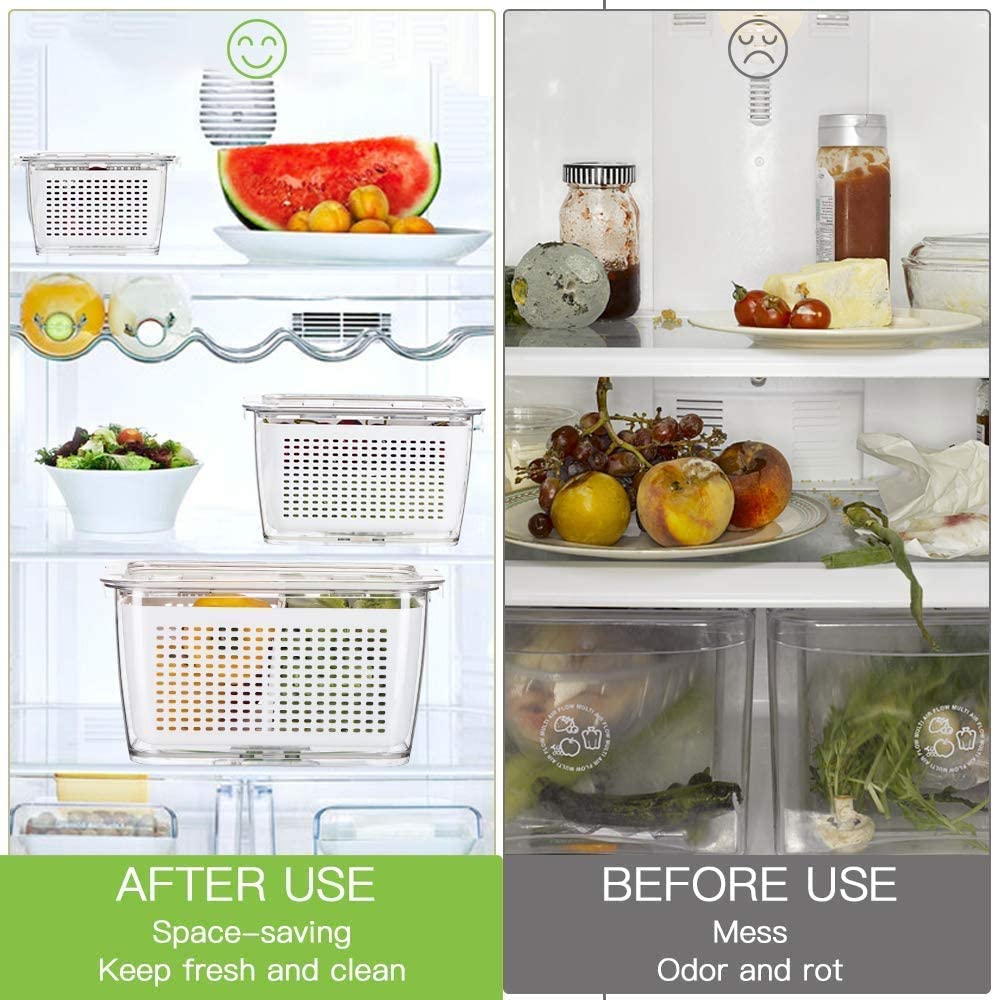
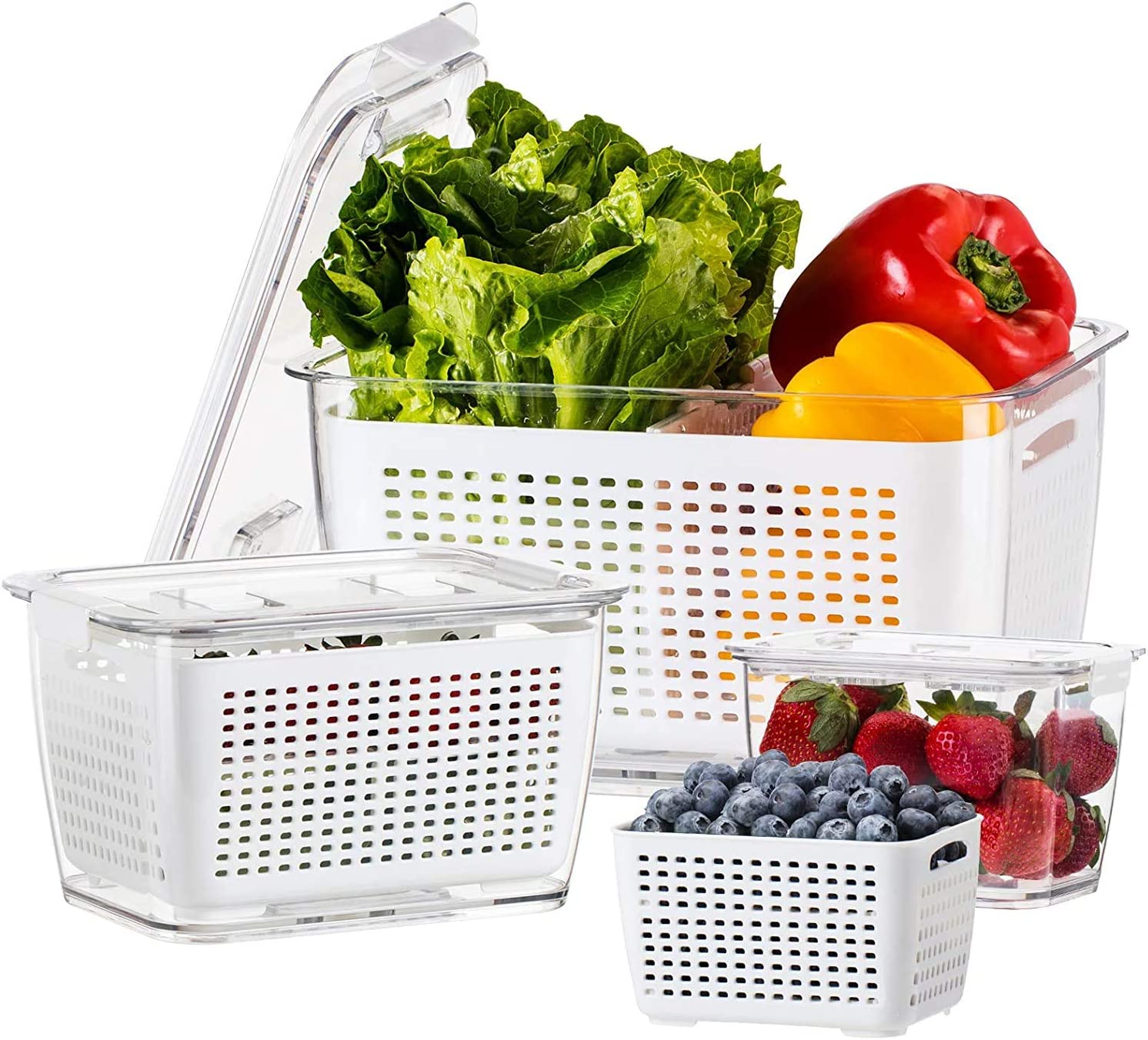
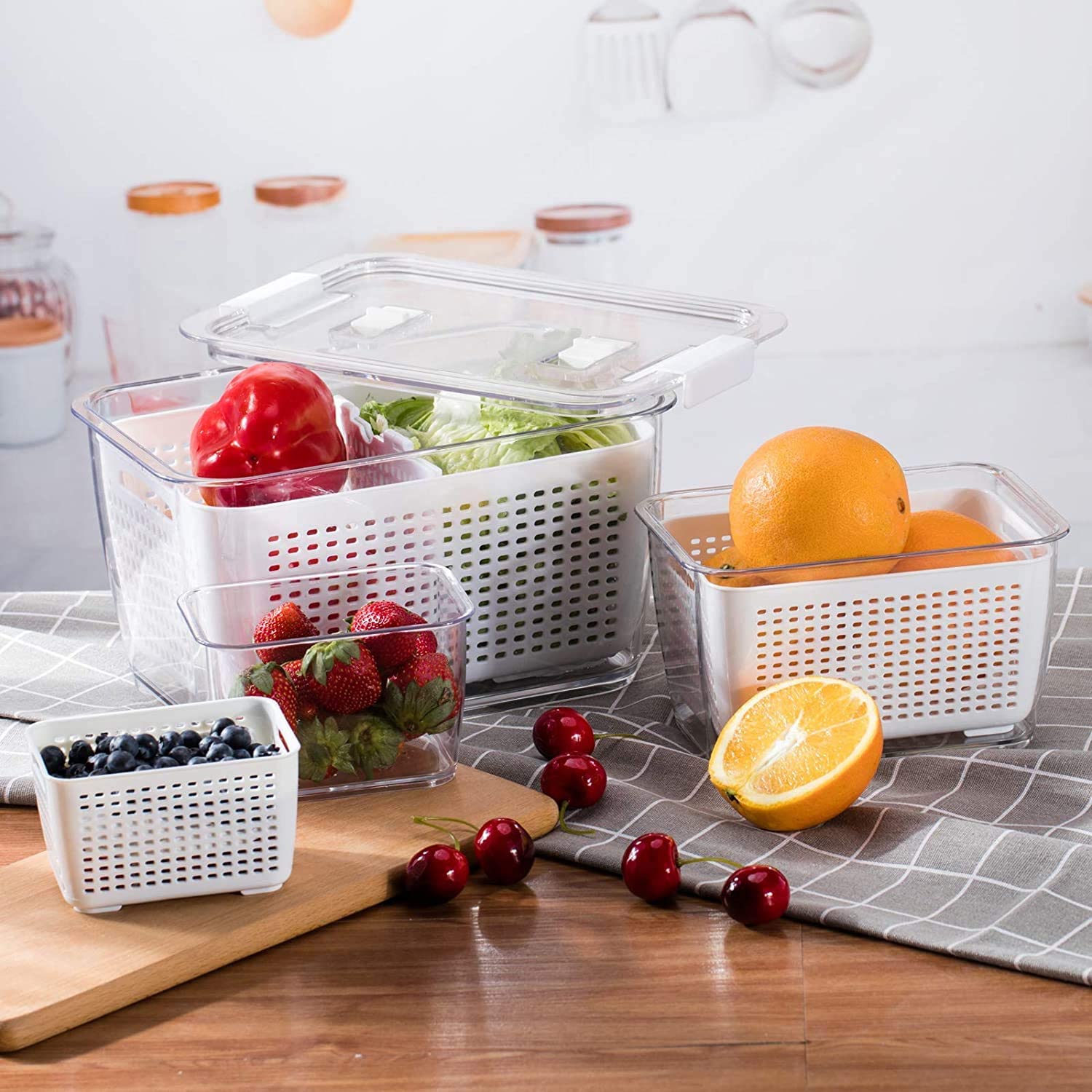 Lettuce: Store with a paper towel
Lettuce: Store with a paper towel


